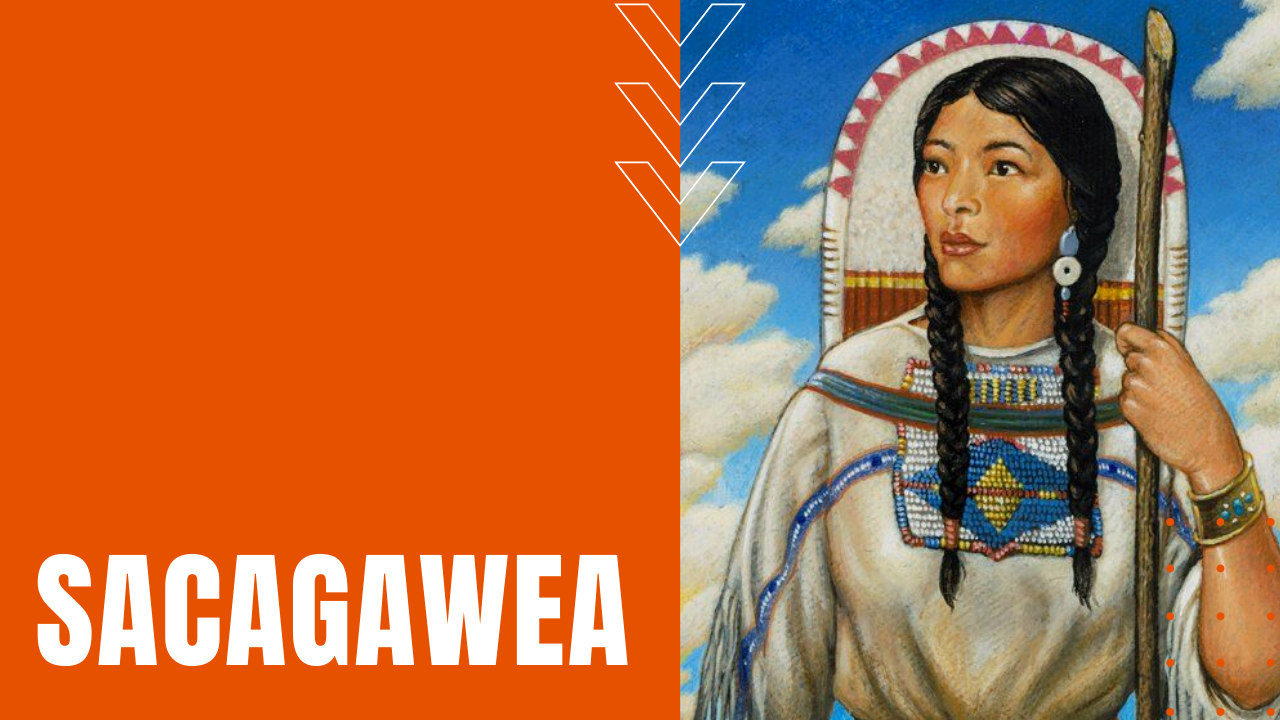Sacagawea: Biography of a Native American Hero

Although details about much of her life are limited, Sacagawea was born into a Shoshone tribe near present-day Salmon Idaho, sometime around 1788.
At age twelve, Sacagawea and several other young Shoshone girls were kidnapped during a deadly raid by Hidatsa warriors, before being sold into a non-consensual marriage to a French-Canadian fur trapper, Toussaint Carbonneau.
Lewis and Clark Expedition
Thanks to diaries and letters of Meriwether Lewis and William Clark, before, during and after their now legendary trek to the Pacific Ocean and back, their combined penning details the hiring of Sacagawea’s husband Carbonneau as their translator, before venturing westward from their winter encampment at Fort Mandan.
Sacagawea’s mastery of the Shoshone or Snake language proved to be of critical importance during their arduous journey west. Nicknamed “Janey” by Meriwether Lewis, Sacagawea and her 55-day-old son, Jean Baptiste Charbonneau—nicknamed “Little Pomp” by Clark—became in many ways more important to the expedition than Charbonneau himself, since the presence of a woman and child in the party, as Clark wrote, “reconciles all the Indians as to our friendly intention a woman with a party of men is a token of peace.”
After her quick thinking saved important supplies (not to mention the diaries of both Lewis and Clark) when her pirogue capsized in bad weather, both explorers praised her action by naming the Sacagawea River in her honor, while her ability to communicate with native tribes along the way, allowed the corps to barter successfully for fresh mounts and supplies.
Because of her knowledge of the Rocky Mountains, in July of 1806, Sacagawea advised the explorers to cross into the Yellowstone River basin at present-day Bozeman Pass, which later became the optimal route for the Northern Pacific Railway’s eventual path across the continental divide.
After the expedition ended, Sacagawea and her young family spent three years living with the Hidatsa people, before accepting an 1809 invitation by Clark to settle in St. Louis.
Sacagawea’s Death
After giving birth to a second child named Lizette, Sacagawea passed away on December 20th, 1812—at the tender age of 25—following a protracted battle with typhus. According to Missouri Orphans Court records, her children—ten-year-old Pomp and one-year-old Lizette—were formally adopted by William Clark on August 11th, 1813, making Sacagawea a short-lived yet vital asset during one of the greatest journeys in American history.
